
|
![]()
Greatest Films of the 1980s
1980 | 1981 | 1982 | 1983 | 1984 | 1985 | 1986 | 1987 | 1988 | 1989
Title Screen Film Genre(s), Title, Year, (Country), Length, Director, Description 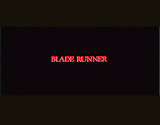



Blade Runner (1982), 117 minutes, D: Ridley Scott
Moody futuristic, sci-fi noirish thriller, with stunning, visually-dazzling effects and a brooding atmosphere, about a hard-boiled detective hunting near-human "replicants." Based on the novel Do Androids Dream of Electric Sheep? by Philip K. Dick. In a totalitarian, decaying 21st century Los Angeles (2019), a jaded, semi-retired, Philip Marlowe-style ex-cop (Harrison Ford), known as a "blade runner," is forced out of retirement to hunt down and eliminate four "replicants" (Daryl Hannah, Rutger Hauer, Joanna Cassidy) - genetically engineered super-humanoid robots. On earth illegally from an Off-world colony where they were used as slave laborers, and with a built-in, shortened life span of only four years, the androids have mutinied and escaped in order to confront the individual who designed them (Joe Turkel). Seeing their heroic struggle against an inhuman system, the blade-runner ultimately falls in love with an android femme fatale (Sean Young).


Diner (1982), 110 minutes, D: Barry Levinson



E. T. - The Extra-Terrestrial (1982), 115 minutes, D: Steven Spielberg
A massively popular, widely appealing, feel-good sci-fi fantasy - a cultural phenomenon in the early 80s - about a kind-hearted, cute alien living with a suburban family - one of the most popular and highest-grossing movies of all time. A harmless alien botanist from outer space is left behind and stranded on Earth. The lovable extra-terrestrial is lured by Halloween candy (Reese's Pieces), befriended by a young boy (Henry Thomas), and protected from authoritarian adults and menacing scientists who want to dissect and study the creature. The curious alien eventually finds his way home, with aid from children, to his returning spaceship.

Fanny and Alexander (1982, Swe./Fr./W.Germ.) (aka Fanny Och Alexander), 188 minutes, D: Ingmar Bergman
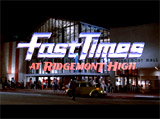


Fast Times at Ridgemont High (1982), 91 minutes, D: Amy Heckerling
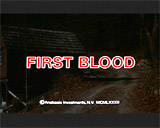


First Blood (1982) (aka Rambo: First Blood), 99 minutes, D: Ted Kotcheff



Fitzcarraldo (1982, W.Germ./Peru), 157 minutes, D: Werner Herzog
Werner Herzog's adventure/action film was a fascinating depiction of a crazed Irish dreamer's (Klaus Kinski) obsessed scheme to become a rubber entrepreneur in turn-of-the-century Peru. His quixotic plans included hauling a massive 320 ton steamship, christened SS Molly Aida, over a group of steep-inclined South American hills to another waterway. The persevering Brian Sweeney Fitzgerald (known as Fitzcarraldo) was convinced that a shipping lane through the Amazonian rainforest could facilitate access to a profitable area of 14 million rubber trees. A second mad idea of the determined opera music lover was to use his rubber fortune to finance an opera house in the middle of nowhere.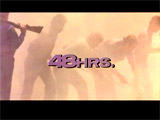




48 Hrs. (1982), 96 minutes, D: Walter Hill




Gandhi (1982, UK), 188 minutes, D: Richard Attenborough



The King of Comedy (1982), 108 minutes, D: Martin Scorsese
Scorsese's original, under-appreciated dark comedy - a stark contrast to his own Taxi Driver (1976), about the bizarre relationship between stardom, the cult of celebrity, and violence-prone wannabe obsessed fans, similar to Elia Kazan's A Face in the Crowd (1957). With Robert De Niro (in his fourth film with Scorsese) as a wimpy, aspiring stand-up comedian named Rupert Pupkin, a man in his mid-30's who still lives with his mother (only heard off-screen). The untalented and self-deluded Rupert worships fame and is determined to become a celebrity. He is totally obsessed with late-night talk show host Jerry Langford (Jerry Lewis, playing the role absolutely straight in his best dramatic role ever), a Johnny Carson-esque character (the part was originally written for Johnny Carson), and stalks his 'love' object at his show. He brazenly appears unannounced at Langford's country estate with an embarrassed date-friend Rita (Diahnne Abbott, De Niro's wife at the time). Later, with the help of an equally deranged, amorous fan and talk-show groupie Masha (Sandra Bernhard, who won Best Supporting Actress with the National Society of Film Critics), Rupert kidnaps Langford and demands as ransom that he get to do the opening monologue one night on Langford's show, and be named the new "King of Comedy." Scorsese and screenwriter Paul Zimmerman manage to pull off a story that is not only chilling and spooky, but geniunely funny, yet the film was so far ahead of its time that it flopped at the box-office upon release.

Koyaanisqatsi (1982), 87 minutes, D: Godfrey Reggio
The powerful, unconventional, experimental and provocative script-less, actor-less, and dialogue-less film (except for the chanting of Hopi prophecy at the end) was from director Godfrey Reggio - his first attempt at a feature-length narrative film. One of the title's meanings was: "A state of life that calls for another way of living." The Hopi Prophecies chanted in the film were translated in a final title card, warning: "If we dig precious things from the land, we will invite disaster." Considered both revolutionary and pretentious, this unique and hypnotic work with incredible, expert time-lapse photography was insightful about humankind and our relationship to nature, and explored the world in ways we usually never see due to our limited perceptions. The title was taken from a Hopi Indian word, meaning, among other things: "Life (a world) out of balance." This multimedia film, supported by both Francis Ford Coppola and George Lucas - a well-constructed sequence of music-laced scenes, illustrated the collision of the natural world with the hustle and bustle of urban, technological life and civilization. Koyaanisqatsi featured images and scenes that were truly haunting and lingering long after the film was over, like the empty shells of the Pruitt-Igoe housing in St. Louis, the alternating shots between satellite photos of human cities and the landscapes of micro-chip circuitry, and the final shot of a V2 rocket exploding, as the camera followed the free-fall of a charred chunk to the ground. Clouds over the Grand Canyon appeared as roiling waves of a white ocean, or as shadows over the sides of towering NYC skyscrapers, and city streets with streaks of brake lights from commuter's vehicles looked like blood vessels in the circulatory system. Philip Glass' stunningly creative, minimalist score played as large a part as the cinematography (by Ron Fricke), and beautifully complemented this artistic film. Followed by two sequels in a Qatsi trilogy, of sorts: the equally powerful Powaqqatsi (1988) (life in transformation) focusing on Third World countries, and the lesser Naqoyqatsi (2003) (life as war).


Missing (1982), 122 minutes, D: Constantin Costa-Gavras
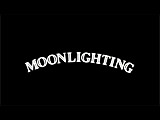

Moonlighting (1982, UK), 97 minutes, D: Jerzy Skolimowski
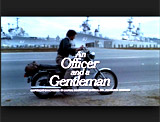


An Officer and a Gentleman (1982), 126 minutes, D: Taylor Hackford


Poltergeist (1982), 114 minutes, D: Tobe Hooper
A memorable supernatural horror film from co-producer/co-writer Steven Spielberg and director Tobe Hooper (better known for his cult horror classic The Texas Chainsaw Massacre (1974)). This was Spielberg's first smash hit as a co-producer, paired with Frank Marshall (who later produced Who Framed Roger Rabbit? (1988)). Its classic 'haunted house ghost story' is fascinating to watch, with extraordinary special effects created by George Lucas' Industrial Light and Magic team, from a screenplay by Spielberg, Michael Grais, and Mark Victor. It was released at the same time as another suburban tale with otherworldly visitors: E.T.: The Extra-Terrestrial (1982) and can also be interpreted as a threatening, scarier version of director Spielberg's pre-E.T. film: Close Encounters of the Third Kind (1977). Compared to both films, Poltergeist is the dark flip side for Diane and Steve Freeling (JoBeth Williams and Craig T. Nelson) in the Cuesta Verde housing development, with ordinary objects that turn threatening (for example, a suburban tract dream home, a backyard tree, a favorite doll, a closet, and a TV screen). The famous poster reflected one of the more memorable, spookier moments of the film, with young 5 year-old Carole Anne (Heather O'Rourke) pressed against a television showing nothing but white noise, saying, "They're here."There were two, less successful sequels in subsequent years: Poltergeist II: The Other Side (1986) and Poltergeist III (1988). Many filmgoers have been intrigued by the seemingly-tragic legacy of the film, with the unexpected deaths of star Dominique Dunne (in her last film role before her tragic murder by her live-in boyfriend) and O'Rourke (who died six years later just before the second sequel's release).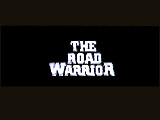


The Road Warrior (1982), 94 minutes, D: George Miller
See previous year's Mad Max 2 (1981, Aust.).

Sophie's Choice (1982), 157 minutes, D: Alan J. Pakula
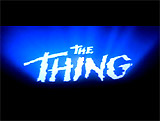

The Thing (1982) (aka John Carpenter's The Thing), 108 minutes, D: John Carpenter
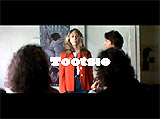


Tootsie (1982), 116 minutes, D: Sydney Pollack
A modern-day, appealing classic Hollywood romantic comedy, from actor/director Sydney Pollack (playing an exasperated agent named George Fields) - with witty dialogue about a NYC actor who was forced to cross-dress to find employment. Desperate out-of-work, contentious stage actor Michael Dorsey (Dustin Hoffman), often considered temperamental, could only find part-time jobs. When his insecure girlfriend Sandy (Teri Garr) was rejected for a role in a daytime TV soap opera produced/directed by sexist Ron (Dabney Coleman), Michael disguised himself as his own cross-dressing alter-ego named 'Dorothy Michaels' - a middle-aged feminist with padding, and won the part. [Note: Hoffman successfully prepared for the role by dressing in drag and convincingly fooling others, and he welcomed the chance to lampoon his own acting reputation as "difficult."] Soon, he became wildly popular in the hit show Southwest General (a parody of General Hospital), but his life became even more complicated. While pursued by lecherous, aging lead actor John Van Horn (George Gaynes), the disguised Michael became close to sweet fellow co-star actress Julie Nichols (Jessica Lange), while her interested widowed father Les (Charles Durning) fell for him. He learned a lesson that he confessed to Julie in the conclusion: "I was a better man with you, as a woman, than I ever was with a woman, as a man."

The Verdict (1982), 129 minutes, D: Sidney Lumet
Alcoholic, ambulance-chasing, personal injury lawyer Frank Galvin (Paul Newman) in Boston, disgraced (when framed for jury tampering) and with a reputation for losing, was forced to acquire business by attending funeral services and handing out business cards to bereaved family membres. Then, his friend and semi-retired mentor Mickey Morrissey (Jack Warden) referred him to a devastating hospital case - that would soon produce a medical malpractice lawsuit. A pregnant woman became comatose and was left in a vegetative state following delivery at a Boston Archdiocese hospital. In the most promising case of his career and to atone for his drunken past, Galvin (while struggling to stay sober) was challenged to prove that Dr. Towler (Wesley Addy) had administered the wrong anesthesia. It was assumed that the family (and defense) would accept a huge settlement of $210,000 from the hospital's head Bishop Brophy (Edward Binns), or from slick defense attorney Ed Concannon (James Mason). But Galvin, in a stunning reversal, refused to settle out of court and set about to take the case for the plaintiffs, in the presence of presiding Judge Hoyle (Milo O'Shea). During the trial, Galvin was immediately confronted by sneaky tactics from Concannon's law firm: unscrupulous methods that removed a key medical witness, the undermining of a substitute witness' testimony, the planting of fellow bar-patron Laura Fischer (Charlotte Rampling) from the competing law firm as his love-making partner - in order to betray him, and cronyism with Judge Hoyle. Dr. Towler testified that he had done nothing improper or negligent, and had administered the proper drug for a patient that reportedly hadn't eaten for nine hours. Then, Galvin called a surprise witness, nurse Kaitlin Costello (Lindsay Crouse), to testify that Towler had ordered her to change the admitting records about the time interval from "1 hour" to "9 hours" - after he had made a fatal error by using the wrong anesthesia. She revealed a photocopy of the original admitting room form, showing the number "1" to the stunned court. Concannon conspired with the Judge to declare the nurse's testimony as inadmissable. In the conclusion, Galvin presented a subdued but convincing closing summation-argument to the courtroom jury: "So much of the time, we're just lost. We say, 'Please, God, tell us what is right. Tell us what is true.' I mean there is no justice. The rich win. The poor are powerless. We become tired of hearing people lie. And after a time we become dead, a little dead. We think of ourselves as victims, and we become victims. We become, we become weak. We doubt ourselves. We doubt our beliefs. We doubt our institutions, and we doubt the law. But today, you are the law. You are the law, not some book, not the lawyers, not a marble statue, or the trappings of the court. See, those are just symbols of our desire to be just. They are, they are, in fact, a prayer, I mean a fervent and a frightened prayer. In my religion, they say, 'Act as if you had faith. Faith will be given to you.' If-if we are to have faith in justice, we need only to believe in ourselves and act with justice. See, I believe there is justice in our hearts." The jury returned their decision in favor of Galvin's clients (the plaintiffs), thereby disregarding the judge's instructions to ignore the nurse's testimony. The jury foreman was told that they could legally award a greater amount than originally asked for.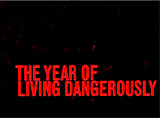




The Year of Living Dangerously (1982, Australia/US), 115 minutes, D: Peter Weir
A story of political upheaval, divergent cultures, loyalty, betrayal, ambition, and morality, embedded in a love story. The first overseas assignment of shallow yet ambitious Australian journalist Guy Hamilton (Mel Gibson) was in Indonesia in 1965. Hamilton was 'adopted' by dwarfish Eurasian photographer Billy Kwan (Oscar-winning, cross-gendered Linda Hunt) and introduced to British consular official Jill Bryant (Sigourney Weaver) with whom he promptly fell in love. She gave him secret information regarding an arms shipment to the Communists so that they could escape the predicted war together, but Hamilton unwisely used the information for an exclusive story and put their lives in jeopardy.